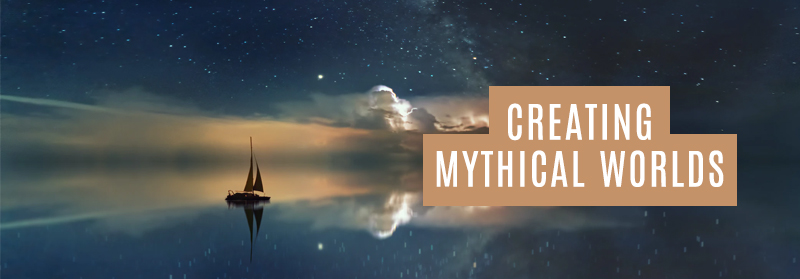
Worldbuilding is one of the most challenging and rewarding aspects of writing. We often see complex worldbuilding in the fantasy, dystopian, and science fiction genres, where authors create entirely new worlds with their own histories, cultures, and rules. When this is done effectively, these worlds start to feel like home to readers. Perhaps one of the most obvious examples is the Harry Potter franchise. Who wouldn’t want to spend Christmas at Hogwarts, exploring the castle and feasting on treacle tart? More recently, fans of Sarah J. Maas have also shown a fierce admiration for her new adult fantasy series, Crescent City, in which the intricate worldbuilding is crucial to the story and all its subplots. Books with fascinating worlds like these are not easy to write, but good authors make them easy to read. There are several things to consider when creating a mythical world that readers can seamlessly immerse themselves in.
Frist, it’s important to ask: What kind of story is this? Is it driven by plot, by character development, or by the world itself? In tales driven by plot and/or character development, the mythical world lends itself as a backdrop to the story; in tales of exploration, the mythical world is the story. Both require detailed worldbuilding, but the latter has a greater focus on the story’s setting. It’s also common for a novel to fall into more than one of these categories. For example, Crescent City is both plot-driven and a tale of exploration. Bryce and Hunt work to solve the mystery behind the gruesome murder of Bryce’s best friend, and along the way, discover shocking truths about the world they live in that have long been hidden away by its powerful rulers. Choosing the driving force of your story is important because it will help determine how much worldbuilding is required and how to best execute it.
It’s also crucial to describe the inhabitants of the world being created. What species are they? Do they have abilities or powers that make them special? Do they use magic? Questions like these should be answered early on so that readers can familiarize themselves with the characters and the norms of the mythical world. In Leigh Bardugo’s Shadow and Bone series, characters are categorized by the type of magic they wield: There are characters whose powers manipulate the human body, those who can control elements like wind, fire, and water, and those able to manipulate the composition of solid objects and chemicals. Bardugo, like many fantasy writers, helpfully includes a list of each class and its subcategories at the beginning of her books so that readers can refer to it if need be. Maps are also often included in fantasy, dystopian, and science fiction novels to help readers visualize the layout of the land.
Another thing to consider while worldbuilding is the world’s political infrastructure. Each mythical world comes with its own rules and laws. In Harry Potter, the governing body that created and enforced these laws was the Ministry of Magic; in Cassandra Clare’s The Mortal Instruments, it was the Clave; in The Hunger Games, the Capitol. Whether characters are abiding by the rules or breaking them, they usually play a big role in the development of the story, which is why it’s crucial to establish them early on. It’s also important to determine whether or not your mythical world has a class system, and if so, how that system came to be in place. Who are the world’s rulers? Who are its enemies? To answer these questions, you must explore the history and geography of the world you’re creating. Was there a war or some other big event that divided the people? Was there – and is there currently – conflict over resources, opposing ideologies, religion, or power? Creating a solid background and describing the rules of your world will help readers better understand and appreciate your story.
Along with establishing the political landscape and history of your mythical world, it’s also wise to establish its culture. What do these characters believe in? What do they enjoy? How do they communicate with one another? Are there customs that bring them together? Traditions they celebrate? Superstitions that are unique to them? These are the details that breathe life into your characters and make them memorable. This is what makes readers want to experience the world for themselves.
The last – and probably most important – thing to consider while worldbuilding is how to share all the information you’ve collected. A writer could have every detail of the world they’ve built committed to memory, but if they can’t relay these things in a convincing and captivating way, readers probably won’t stick around to see where the story goes. This is why pacing is vital. A large info-dump at the beginning of the book can be confusing and overwhelming. Instead, share bits and pieces of your world through a combination of dialogue, narration, and action, so that it’s digestible and enjoyable for the reader. Creating worlds out of words is one of the great joys of writing, and for those who feel at home in these worlds, it’s one of the great joys of reading. While worldbuilding can be challenging at times, it can also be immensely enjoyable. And the result of your hard work? An excellent story, satisfied readers, and a world you built all on your own.

Leave A Comment